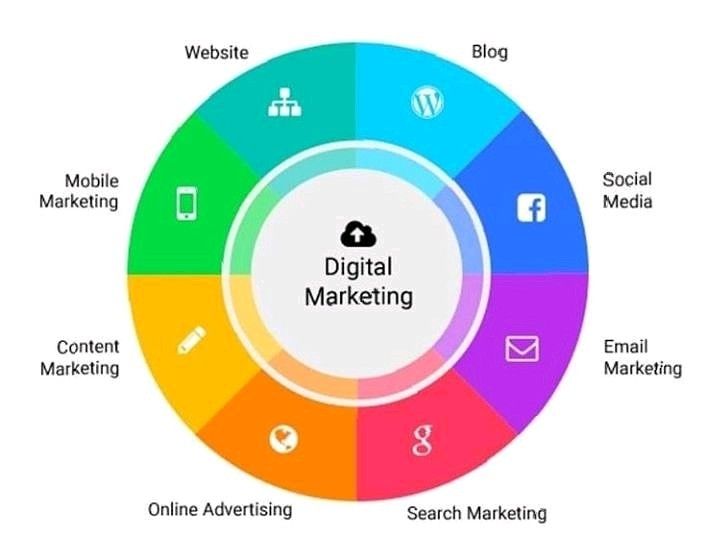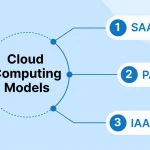The impact caused by digital market in current growing economy and its classifications. Digital marketing is a way for businesses to promote their products and services online.
Introduction
As our lives become increasingly interconnected with technology, it is no wonder that digital marketing has emerged as a critical component of any business strategy. In the rapidly evolving landscape of the digital age, businesses must leverage every tool at their disposal to stay competitive. One of the most powerful tools that has reshaped the business world is digital marketing. Digital marketing aims to drive website traffic, increase online sales, and improve brand awareness through the use of various digital channels and tactics. These channels include social media, email, search engines, and virtual reality. Digital Marketing encompasses a wide range of activities that leverage the internet and electronic devices, such as social media marketing, search engine optimization (SEO), content marketing, email marketing, online advertising, and more. The key advantage of digital marketing lies in its ability to reach a global audience, track campaign performance in real-time, and personalize messages to engage customers effectively. Digital marketing has become a crucial component of their overall strategy for driving growth, improving customer relationships, and staying competitive in a rapidly evolving market landscape. Digital Marketing has significantly transformed the way brands and businesses utilize technology for marketing since the 1990s and 2000s.
In the 1990s, the term digital marketing was coined. With the development of server/client architecture and the popularity of personal computers, Customer Relationship Management (CRM) applications became a significant factor in marketing technology. Fierce competition forced vendors to include more services in their software, such as marketing, sales, and service applications. Digital marketing is composed of several essential components. Each of these components focuses on using digital channels to increase visibility, engagement, and sales for a business.
Digital Marketing consists of various KEY COMPONENTS such as Search Engine Optimization (SEO), Content Marketing, Social Media Marketing, Email Marketing, Pay-Per-Click (PPC) Advertising, Affiliate Marketing, Online Public Relations (PR), Display Advertising, Mobile Marketing.
Here in PLUMSCOPE CO. we offer digital marketing services to its clients by engaging their target customers through the right platform at the right time.
KEY COMPONENTS OF DIGITAL MARKETING
1. Search Engine Optimization
Search Engine Optimization in short also known as SEO is the process of improving the quality and quantity of website traffic to a website or a web page from search engines. According to a 2004 article by former industry analyst and current Google employee Danny Sullivan, the phrase “search engine optimization” probably came into use in 1997. Major search engines provide information and guidelines to help with website optimization. By 2004, search engines had incorporated a wide range of undisclosed factors in their ranking algorithms to reduce the impact of link manipulation. Successful search optimization for international markets may require professional translation of web pages, registration of a domain name with a top level domain in the target market, and web hosting that provides a local IP address. Otherwise, the fundamental elements of search optimization are essentially the same, regardless of language.
Regional search engines have a strong presence in specific markets:
China: Baidu leads the market, controlling about 70 to 80% market share.
South Korea: Since the end of 2021, Naver a domestic web portal, has gained prominence in the country.
Russia: Yandex is the leading search engine in Russia. As of December 2023, it accounted for
at least 63.8% of the market share.
2. Pay-Per-Click Advertising
Pay-per-click (PPC) is an internet advertising model used to drive traffic to websites, Pay-per-click is usually associated with first-tier search engines (such as Google Ads, Amazon Advertising, and Microsoft Advertising). PPC display advertisements, also known as banner ads, are shown on websites with related content that have agreed to show ads and are typically not pay-per-click advertising, but instead, usually charge on a cost per thousand impressions (CPM). Essentially, PPC is a way to buy visits to a website rather than earning those visits organically through SEO (Search Engine Optimization). An essential aspect of PPC campaigns is keyword research, which involves identifying terms or phrases that potential customers are likely to use when searching for products or services similar to what a business offers. Social networks such as Facebook, Instagram, LinkedIn, Pinterest, and Twitter have also adopted pay-per-click as one of their advertising models. The amount advertisers pay depends on the publisher and is usually driven by two major factors: the quality of the ad, and the maximum bid the advertiser is willing to pay per click measured against its competitors’ bids. In general, the higher the quality of the ad, the lower the cost per click is charged, and vice versa offers.
3. Email Marketing
Email Marketing is a no new word in today’s generation.
Email marketing has evolved rapidly alongside the technological growth of the 21st century. Before this growth, when emails were novelties to most customers, email marketing was not as effective. In 1978, the first email was sent out by Gary Thuerk who was a marketing manager at Digital Equipment Corporation (DEC)
Email marketing can be carried out in different ways which can be stated as follows:
-
TRANSACTIONAL EMAILS
Transactional emails are automated emails sent from one sender to one recipient, usually related to account activity or a commercial transaction.
-
dIRECT MAILS
Direct email involves sending an email solely to communicate a promotional message (for example, a special offer or a product catalog). Companies usually collect a list of customer or prospect email addresses to send direct promotional messages to, or they rent a list of email addresses from service companies.
One of the biggest advantages of email marketing is its ability to be highly personalized and segmented. By collecting and analyzing customer data, businesses can send tailored messages based on customer behavior, preferences, and purchase history.
4. Mobile Optimization
Mobile Optimization makes the use of digital content, such as, emails, websites and advertisements ensuring that the content is easily accessible and easy to use for everyone owning and using smartphone for digital content. Mobile has become one of the most important parts of the human life and therefore, the developers try to make it possible that the content is first accessible to mobile phones and thereafter, to the PCS and other devices.
Mobile Optimization seems to be the easier and fastest way to get across the digital content whereas if you want to go through the content in laptop or PC you need a proper desk and sufficient space to suffice it.
Mobile Optimization also means reducing the need for zooming, scrolling, or horizontal scrolling, which can be frustrating for users. The impact of mobile optimization without saying goes to very far reaching extent as in today’s world everyone owns a smartphone. As majority of the world spends more time on smartphones mobile optimization is no longer a option but it has become essential. If you are looking to target majority of public mobile optimization is a correct option also the least risk taking option.
5. Content Marketing
Content Marketing not only as a way of digital marketing but also as a profession has grown significantly in modern times. The main focus of content marketing is creating valuable, informative, and engaging content to attract and retain an audience. Content marketing starts with identifying the customer’s needs. Nowadays businesses focus on content marketing more than any other mode of marketing to increase their sales. However, content marketing has also been proven to give maximum results for the products. Content marketing requires continuous delivery of large amounts of content, preferably within a content marketing strategy. People are more to be influenced when the products are being sold by their favorite content creator creating a demand in the market.
Content marketing includes blogs, videos, infographics, podcasts, and eBooks. In traditional forms of advertising the focus is directly on selling the product or service whereas in content marketing useful and informative content is addressed which gives the audience a clarity and addresses their interests and needs.
Therefore, content marketing can be concluded as one of the most powerful tools for marketing and also has higher level of success rate.
CONCLUSION
Therefore from the following key elements of DIGITAL MARKETING it can be concluded that in today’s growing economy digital marketing proves to be more far reaching to the audience. The limitation of products being sold only in a specific area or place is removed with digital marketing. The business units reach their potential consumers through digital marketing and can interact with them. Digital marketing serves best for the interests of businesses as well as consumers.
Digital marketing is not just a trend but has become an essential aspect of business strategy. Digital marketing also allows for personalized marketing experiences, helping brands build stronger relationships with their audiences. However, businesses must stay updated with evolving digital trends, customer preferences, and emerging technologies to remain competitive.
As stated above the following digital marketing techniques are provided by us at
PLUMSCOPE which gives you a promising and certainty of getting maximum responses through the medium of digital marketing. We are available to solve your queries and give a thoughtful solution for your problems.
CONTACT US: contactus@plumscope.com
PHONE NO : 6354059910


